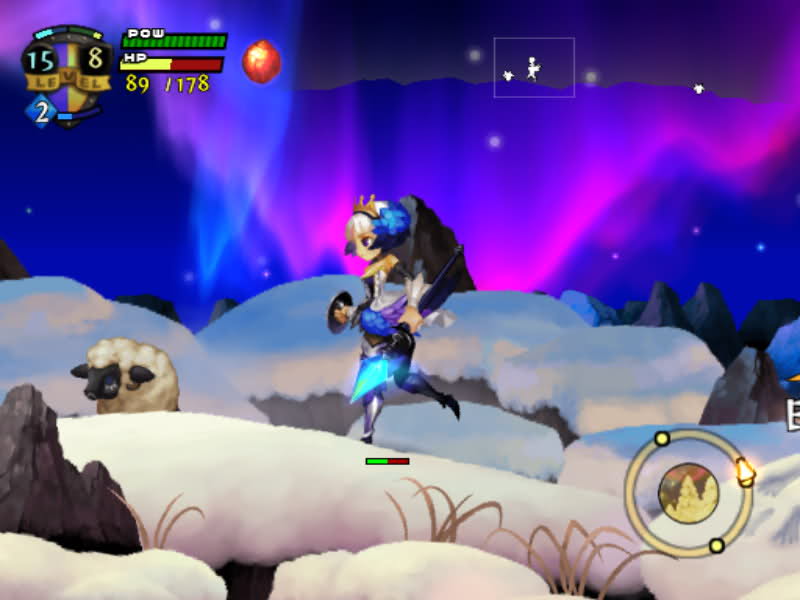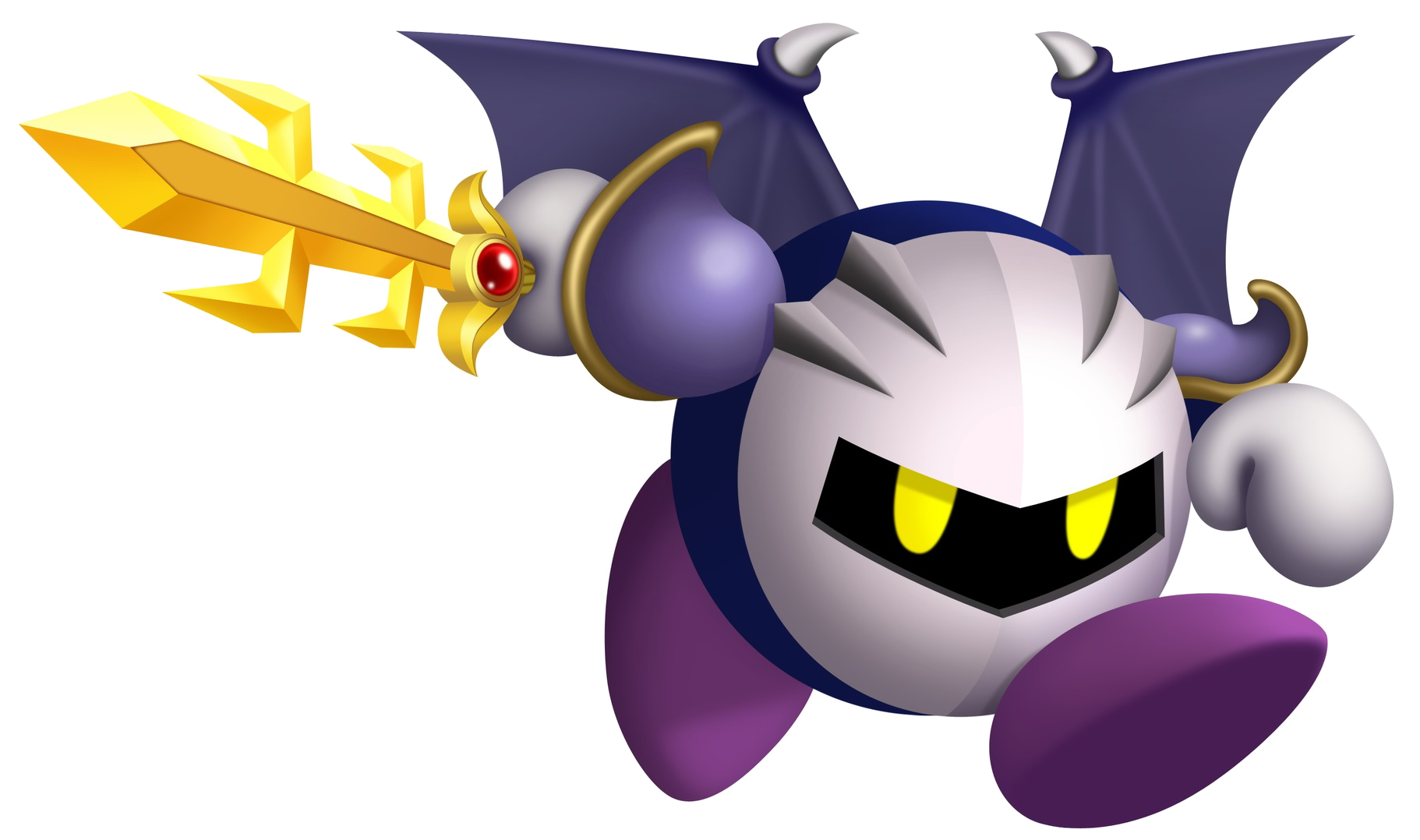Benchmark: Odin Sphere
Over the course of my time here in Schmamerdom, there are a handful of games I’ve made reference to over and over again. These games are my benchmarks, the ones against which I measure and contrast the myriad of experiences this hobby proffers. Odin Sphere is one of these games; I’d like to take some time to explain why.
If Akira Kurosawa were alive today, and directed a video game, it would almost certainly be Odin Sphere. It’s grand epic is so tightly spun— each intricate detail deliberate and necessary— it is almost exhausting trying to absorb it all. The game effortlessly combines the grand scale of political machinations examined through the lens of intrapersonal adversity amid unrelenting and increasingly cruel misfortunes, themes Kurosawa (and Shakespeare) came back to throughout his oeuvre in masterpieces like Ran and The Lower Depths.
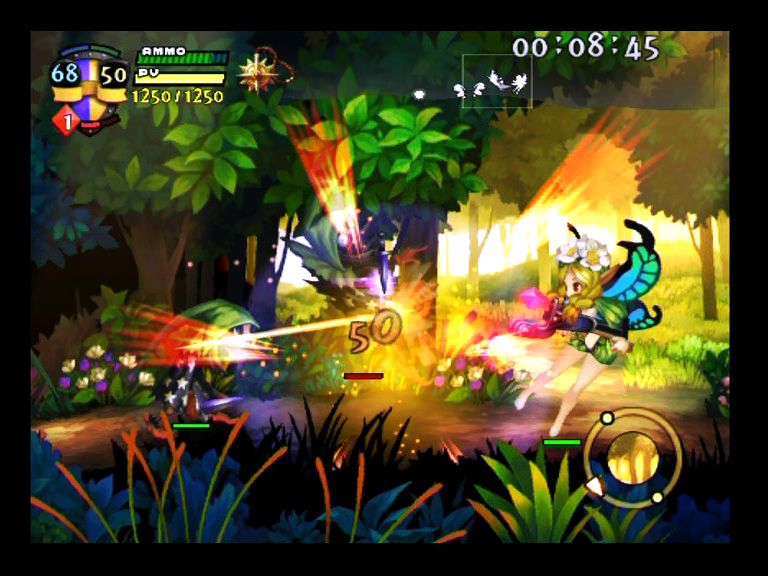 Odin Sphere is breathtakingly beautiful, and I mean that literally. The art direction is, bar none, the pinnacle of hand-drawn video game animation. Each sprite’s every movement exudes the painstaking detail behind it. Vibrant backgrounds breath a sense of vitality and dynamic character into the world of Erion. A brilliant score by Hitoshi Sakamoto comments on and accentuates not only the twists and turns of Odin Sphere’s labyrinthine plot, but the culture of each region and regime within.
Odin Sphere is breathtakingly beautiful, and I mean that literally. The art direction is, bar none, the pinnacle of hand-drawn video game animation. Each sprite’s every movement exudes the painstaking detail behind it. Vibrant backgrounds breath a sense of vitality and dynamic character into the world of Erion. A brilliant score by Hitoshi Sakamoto comments on and accentuates not only the twists and turns of Odin Sphere’s labyrinthine plot, but the culture of each region and regime within.
More than all of this, though, it is a game in a medium full of lazy storytelling that strives to be literary, and one of the few that achieves it. Odin Sphere tells the interlacing story of 5 characters, each with multifaceted motivations and faults, meticulously exposed through different viewpoints of overarching events in a Wagnerian world of Norse lore:
(Spoilers follow. I try to keep them vague, but this is not a story whose quality is lessened by learning the twists and turns in advance.)
Valkyrie Knight Gwendolyn, on the surface, is a courageous and dedicated soldier whose sole purpose is to lead her people to glory through any means necessary. It doesn’t take long to expose her as a young daughter desperate for her father’s approval and affection, willing to go to exorbitant lengths in pursuit of them, and only ever seen as a useful pawn in return. She is promised to (and forced upon) a demon knight named Oswald, cursed to spend eternity in the Underworld, who sees in Gwendolyn his sole chance to bestow upon his life purpose and significance. Here unravels a story of two people who know only how to be used as pawns finding how to use each other for their own ends; here love is not an emotional catharsis, but a glue keeping two piecemeal souls from collapsing upon themselves.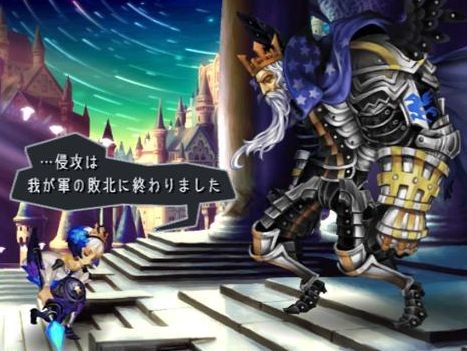
But that’s only one way of looking at it. Through the eyes of Gwendolyn’s illegitimate half-sister Velvet, Gwendolyn’s filial loyalty is not an affliction but a betrayal, her love of Oswald is not a means of escape but a prison with a different view. This is where Odin Sphere shines the brightest. The fates of each of the 5 characters we control are not simply interconnected, in many cases they are starkly opposed. One chapter’s reviled enemy is the next chapter’s hero. There is one particular character who, through the first two acts, is cast as a despicable and loathsome man with no redeeming value. He becomes the most charming and sympathetic character in the third act, one it is impossible not to like, and he underwent no big transformation to get there. No large character realignment from chaotic evil to lawful good, he held the same motivations and desires throughout, we were just introduced to them in a different light.
The delicate, intricate macrame the plot weaves does not utilize a thread of a single color, it is iridescent. Colors dance and mutate with each different angle. The extreme shifts in viewpoint, ironically, serve to bring out the subtle nuances embedded within. Each new story reveals just as much about the characters we’ve already seen as it does the characters we play. Love is not treated as a powerful panacea, it is cast as an equal to avarice, vengeance, ambition, pride and loyalty as cogent motivators. Examined through different shades they can all seem to bleed into each other, but while Odin Sphere makes all of its characters morally diverse, none of them are morally gray. Every individual action is interpreted differently depending on the circumstances and context, which gives the cast a certain kind of consistency; they are not the moral relativists, we are.
Odin Sphere is first and foremost a fairy tale, but one whose tropes and cliches are , in turn and through time, deftly turned on their head: the rescuer knight ends up only rescuing himself, the frog prince plays the role of Jiminy Cricket rather than Prince Charming, the conniving and manipulative Witch has the strongest moral compass. Love at first sight is brought on by a spell. The tale takes a turn through the macabre and mature, decidedly moving it out of the realm for children (despite the entire game being framed by a little girl, Alice, reading it in a book,) but nevertheless it manages to capture that sense of wonder you get from classics like Alice in Wonderland or Sleeping Beauty.
It also manages to be surprisingly feminist (which makes the incident with the Sorceress in Vanillaware’s newest game, Dragon Crown, all the more disappointing.) The overarching theme is, quite literally, breaking out from under a toxic patriarchy. 3 of the 5 playable characters are strong females, and not in the usual tomboyish caricature of “female strength” either. The most stereotypically “strong” of the lot, the courageous and headstrong Gwendolyn, is also the most easily manipulated and weak-willed. Mercedes, by far the most frail and immature, ends up consolidating more influence and power than any of the other 5 characters. Velvet, our Witch, uses her feminine cunning and intellect to assert herself in a way that doesn’t involve sleeping with men, for once. Each woman embodies her own personal fortitude, written in a way that doesn’t simply pay lip-service to ‘strong females’ by sticking them with typically masculine traits and calling it a day.
Odin Sphere is not a game without its flaws, it is languorously verbose, reuses Boss battles way too often, and has spikes of frustrating difficulty that will deter many gamers who would otherwise fall deeply under its spell. I’m reticent to even bring up this point anymore, though, because it is so obvious (what game is “far from perfect” not going to apply to?) and because I think very few of us aren’t so much looking for a flawless game as much as we are a game that contributes something of value to the craft, and Odin Sphere does that in spades.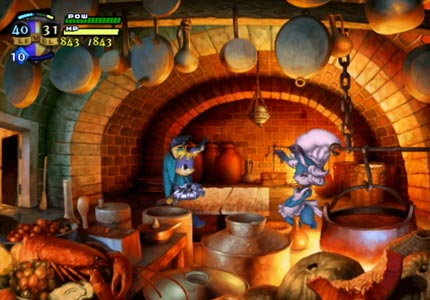
Plus, many artisanal products wear their blemishes with pride, and Odin Sphere is nothing if not an artisanal game. Every aspect meticulously and laboriously crafted by hand, from the art to the combat to the story. It is not quaint, like many of us expect ‘artisanal’ products to be, but this seeming contradiction is what makes Odin Sphere such an engrossing experience. It relishes in the contradictions and dissonance it creates. A very Eastern take on Western mythos. A sprawling epic consuming the entire world told through the overlapping personal struggles of seemingly inconsequential players. Melodramatic without being emotional. Expansive yet compact. Tragic without being a tragedy, hopeful without being happy.
Wagner coined the term “Gesamtkunstwerk” to describe what he was trying to accomplish with his Ring of the Nibelung cycle of operas, whose themes trace very similarly to Odin Sphere’s, which translates to “universal artwork” or “all-encompassing artform.” The idea being to incorporate each of the artistic practices and forms into one grand masterwork showcasing them all; the visual arts, music, dance, literature all combined into the ultimate pièce de résistance. Video games are in a prime position to accomplish this ideal, mixing artistic direction, performance, choreography, music and writing into a coherent experience unmatched by other mediums, even cinema, and Odin Sphere comes the closest to proving why. Very few games provide a product on which all departments were running on all cylinders and at the very top of their game, it absolutely astonishes me that it hardly gets any love for its efforts, doomed to wallow in that languid pool of critically brilliant obscurity like Psychonauts. But brilliant it shall remain, and for this author at least, shall serve as a radiant beacon off in the distance illuminating what we should expect from our games.


